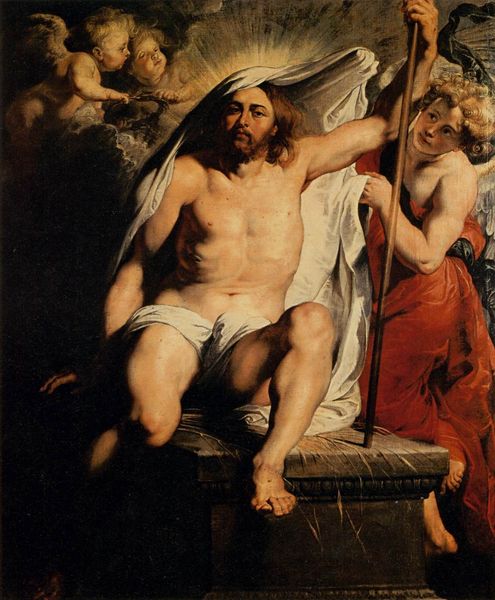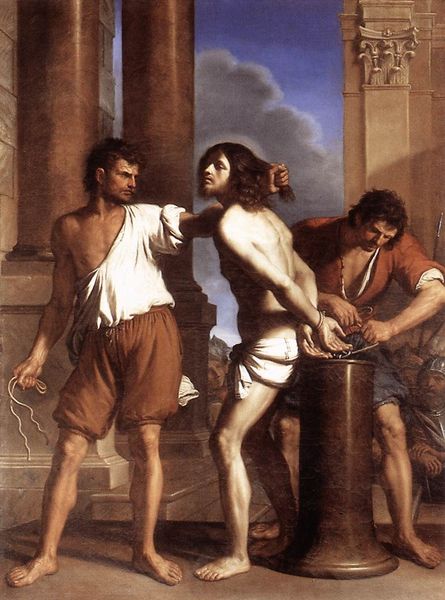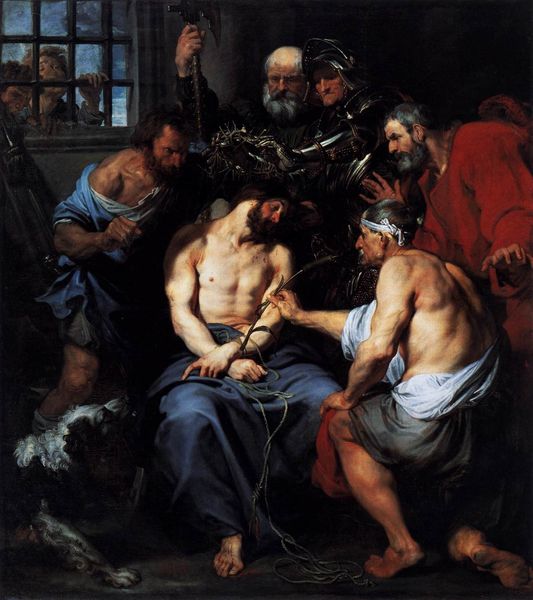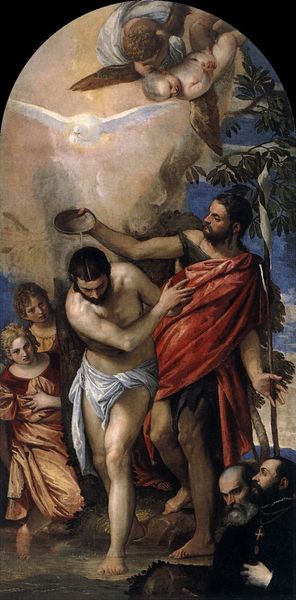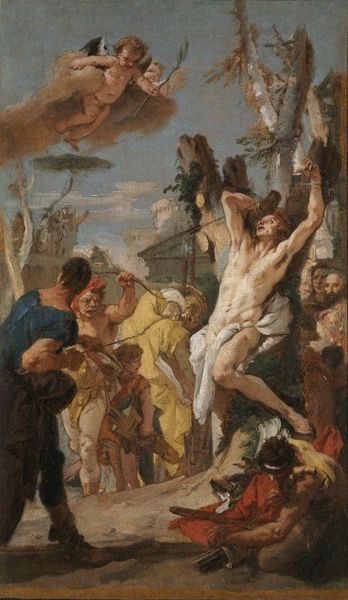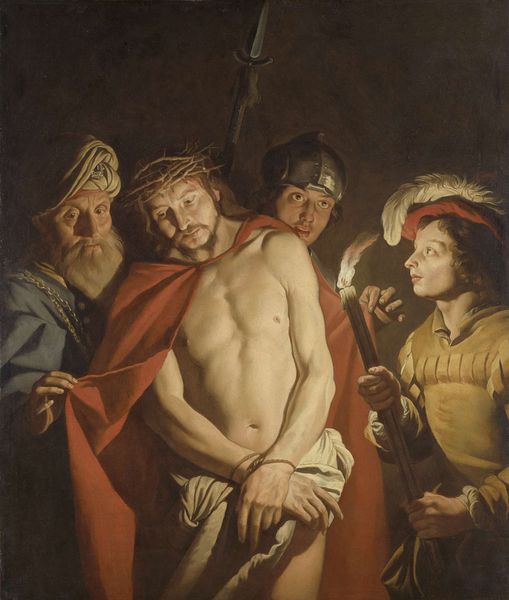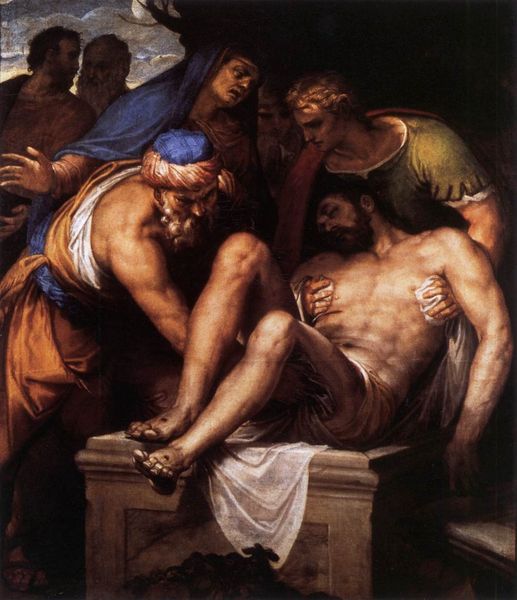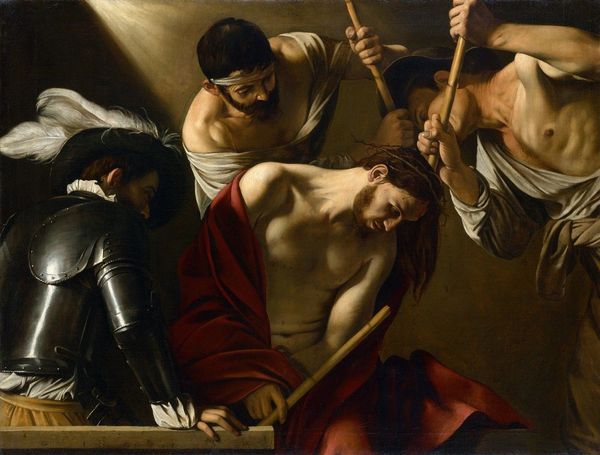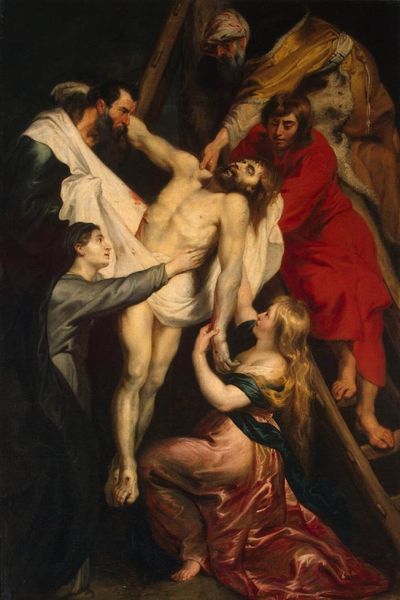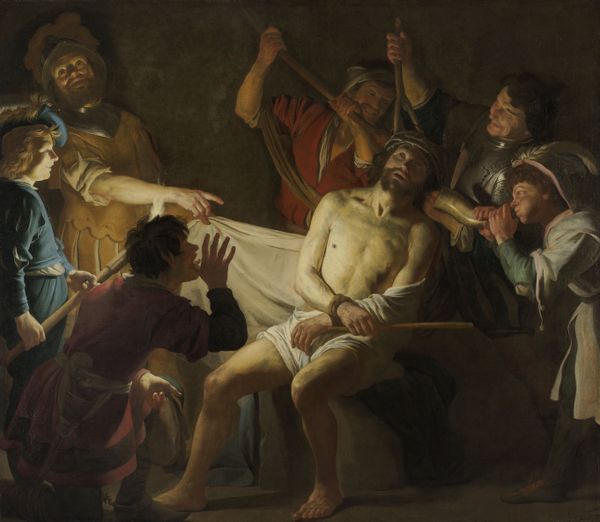
oil-paint
#
baroque
#
oil-paint
#
figuration
#
oil painting
#
mythology
#
human
#
history-painting
#
nude
Copyright: Public domain
Guercino painted "The Flagellation of Christ" to capture the moment of Christ's torment, emphasizing symbols of suffering and divine endurance. The whips, wielded with menacing intent, are not merely instruments of physical pain; they embody humanity's capacity for cruelty and injustice. This motif of the suffering hero tied to a pillar reverberates through art history, echoing images of martyrs and deities enduring trials. The flagellation scene itself, common since the early Middle Ages, serves as a potent reminder of Christ's sacrifice. Yet, even earlier, we see similar themes of sacrifice and suffering in ancient Greek depictions of Prometheus bound to a rock, punished for his benevolence towards humanity. Guercino masterfully conveys the emotional weight of this scene, tapping into our collective memory of suffering and redemption. The halo around Christ’s head signifies divinity, starkly contrasting with the violence, engaging viewers on a profound, subconscious level. Thus, the image of the scourged Christ is a cyclical symbol, continually resurfacing across cultures, evolving in meaning, yet eternally resonating with themes of sacrifice, suffering, and the enduring human spirit.
Comments
No comments
Be the first to comment and join the conversation on the ultimate creative platform.

